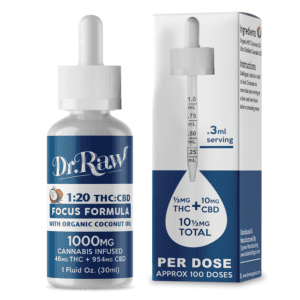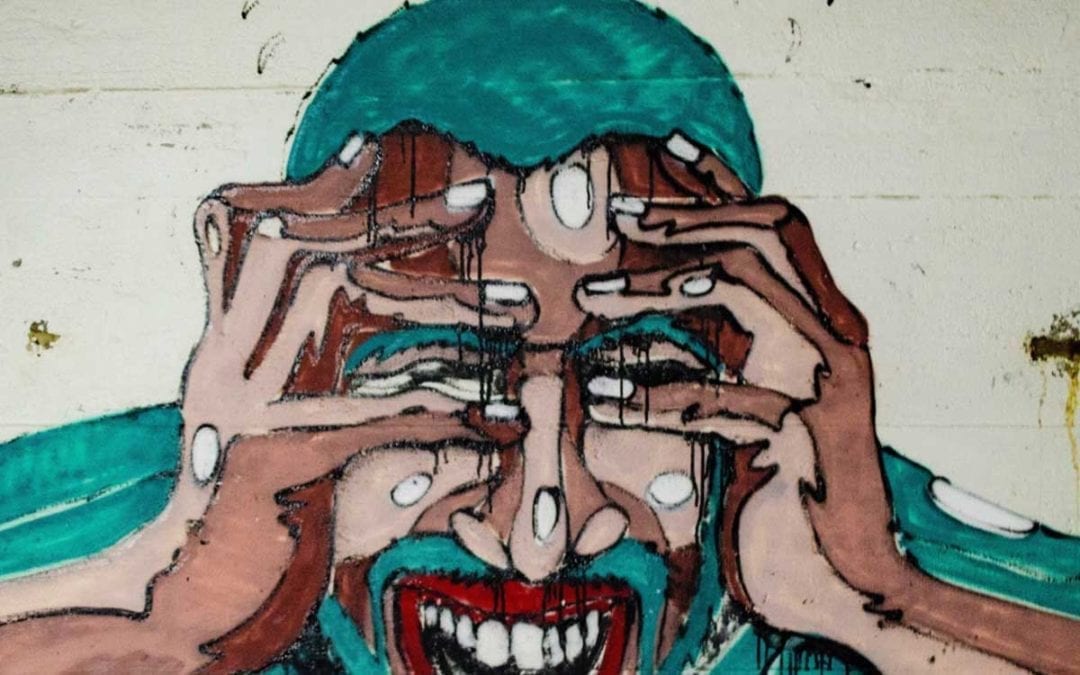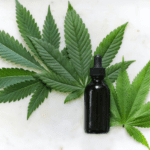Part 1 of Torrey Holistics’ series on cannabis and anxiety. READ PART 2
As I sit writing this, the COVID-19 pandemic is challenging individuals around the world to question their values, traditions, and beliefs in the face of fear and unprecedented social upheaval. If you suffer from anxiety, this pervasive uncertainty about the future is probably not making your symptoms any better. The good news is, you are not alone — as many as 30% of Americans suffer from a clinical anxiety disorder.
There are multiple types of anxiety disorders, including Generalized Anxiety Disorder, Panic Disorder, phobia-related disorders, and Obsessive Compulsive Disorder. Despite their differences, anxiety disorders overlap in their causes, symptoms, and treatments. Fortunately, there is clinical evidence to suggest that cannabis, in combination with traditional anxiety-management techniques, can be used to help manage symptoms and improve quality of life over the long-term. But, before delving into the research behind cannabis and anxiety, it is important to first gain a basic understanding of what anxiety is and how it works.
What Causes Anxiety?
Anxiety is the sensation we experience as a result of an evolutionary mechanism known as the fight-or-flight response. When we encounter a threat, such as running into a Grizzly Bear alone in the woods, our bodies respond physically to prepare us to either run away or attack in self-defense. As a result, our cortisol levels spike, our muscles tense, and our hearts race. When the threat dissipates, the body returns to its baseline state. This last step allows us to complete the stress response cycle.
What happens, though, when we can neither run away nor fight back? We become locked in a permanent state of fight-or-flight mode. The inability to complete the stress response cycle is a central feature of anxiety disorders and can result from socialization, traumatic events, genetics, or various combinations of the three. Symptoms often include persistent worrying, restlessness, muscle tension, insomnia, panic attacks, and more. As a result, anxiety can interfere significantly with daily activities and impair quality of life.
Science-Backed Tips for Reducing Anxiety
There are a number of different strategies for reducing and managing anxiety, but most of them come down to setting and following routines that rewire our existing thought patterns. By practicing science-backed stress reduction techniques, it is possible to reshape your ways of thinking so that the cognitive pathways contributing to your anxiety are replaced by those that support your well-being instead.
One of the best ways to change thought patterns, according to research, is by immersing oneself in a state of flow. Think about a time when you became so absorbed in an activity that you lost track of time; you became fully concentrated on the task at hand so that all other thoughts and worries evaporated. Dr. Csikszentmihalyi defines flow as a state that results from engaging in an activity that challenges the individual to cultivate a skill, making it intrinsically rewarding. Flow allows the individual to transcend self-consciousness and performance anxiety. In other words, flow is living fully in the moment.
 If you are a runner, you are all too familiar with the runner’s high, or the warm, fuzzy feeling that causes you to forget the pain you have just endured and lace up again the next morning. Exercise-induced euphoria is a classic example of flow. In addition to aerobic activity, other activities conducive to flow include mindfulness practice (e.g. meditation or yoga), creating art or music, having sex, and practicing self-care (e.g. getting a massage).
If you are a runner, you are all too familiar with the runner’s high, or the warm, fuzzy feeling that causes you to forget the pain you have just endured and lace up again the next morning. Exercise-induced euphoria is a classic example of flow. In addition to aerobic activity, other activities conducive to flow include mindfulness practice (e.g. meditation or yoga), creating art or music, having sex, and practicing self-care (e.g. getting a massage).
Interestingly, the biological state of flow is characterized by the release of anandamide, the body’s internally-produced equivalent to THC. THC is a compound found in cannabis that, when consumed, is responsible for producing the mind-altering effects commonly associated with use of the plant. THC, CBD, and hundreds of other cannabinoids work synergistically with the stress-regulating systems of the body. Furthermore, this suggests that — with practice — cannabis may facilitate the formation of habits that are helpful for reducing the amount of anxiety in your life.
The Science Behind Cannabis and Anxiety
When using cannabis to manage anxiety, it is important to incorporate both THC and CBD into one’s regimen. Like THC, CBD is a cannabinoid, though it does not produce a high. Whereas THC mimics anandamide in its ability to induce flow, CBD has the unique ability to increase the amount of anandamide in the body, compounding its anxiety-reducing effects. In addition, CBD also reduces cortisol levels, which are responsible for activation of the fight-or-flight stress response cycle.
One similarity between THC and CBD is that both cannabinoids are linked to fear memory extinction. Fear memory extinction is the process through which anxiety caused by exposure to a traumatic or stressful event is diminished. For individuals dealing with panic disorders, the ability to reduce the intensity of a situation can sometimes be enough to allow you to stop, take a deep breath, and curb the cyclical thought storm that ultimately culminates into a full-blown panic attack. Cannabis reduces anxiety through a variety of mechanisms — many of which we have yet to fully understand — underscoring the importance of incorporating a full spectrum of naturally-occurring cannabis compounds into one’s cannabis regimen. This, in turn, allows the consumer to harness the plant’s full therapeutic impact.
The importance of dosing cannot be stressed enough when it comes to managing anxiety with cannabis. While the therapeutic benefits of THC and CBD are well-documented, these effects vary according to dose. Consuming a large dose of THC, for instance, may elicit an anxiety-producing effect due to its biphasic properties. CBD can also produce different effects at high or low doses, though the threshold can be several times higher than that of THC. Consequently, cannabis products with lower amounts of THC and higher amounts of CBD are typically recommended for those dealing with anxiety. A low or beginner dose of THC typically ranges from one to three milligrams, but every body reacts differently to cannabis. Furthermore, it will take conscious experimentation to find a dose that works best for you. Luckily, a licensed cannabis dispensary will have plenty of products available that meet these standards.
Using Cannabis for Anxiety
 One misconception many people have about cannabis is that it can fix all of your problems after one use. This is not true. Just as anxiety management techniques require practice to achieve results, cannabis must be used regularly to experience its long-term benefits. Tinctures are a versatile option for incorporating cannabis into one’s daily routine. A great product for this is Dr. Raw’s Focus formula tincture. With 20 parts CBD and 1 part THC, one dose does not produce a high, but does impart the synergistic benefits of both THC and CBD. In addition, taking a high-CBD product in the morning can boost alertness and concentration, allowing you to reach flow more easily and without feeling high. When using tinctures, you can let your dose absorb under your tongue, or put it in your coffee or breakfast.
One misconception many people have about cannabis is that it can fix all of your problems after one use. This is not true. Just as anxiety management techniques require practice to achieve results, cannabis must be used regularly to experience its long-term benefits. Tinctures are a versatile option for incorporating cannabis into one’s daily routine. A great product for this is Dr. Raw’s Focus formula tincture. With 20 parts CBD and 1 part THC, one dose does not produce a high, but does impart the synergistic benefits of both THC and CBD. In addition, taking a high-CBD product in the morning can boost alertness and concentration, allowing you to reach flow more easily and without feeling high. When using tinctures, you can let your dose absorb under your tongue, or put it in your coffee or breakfast.
By now, you probably recognize that simply knowing all of this information is not enough to reduce and manage anxiety. Regular practice is needed to alter thought patterns and yield long-term results. Luckily, cannabis is a wonderful supplement to assist you in taking these steps. In the next blog post on Managing Anxiety with Cannabis, I will discuss more ways of incorporating cannabis into your daily regimen and address how it can be helpful for managing the more acute symptoms of anxiety, such as panic attacks. Until then, remember to be kind to yourself, as it is normal to experience anxiety during times like these. At Torrey Holistics, we hope you will take solace in knowing that we will be here to help you every step of the way.
These statements have not been evaluated by the FDA. Nothing said, done, typed, printed or reproduced by Torrey Holistics is intended to diagnose, prescribe, treat or take the place of a licensed physician.
About the Author

References
Csikszentmihalyi, Mihaly. Flow: The Psychology of Optimal Experience. New York: Harper & Row, 1990. Cross Ref: https://positivepsychology.org.uk/living-in-flow/. Accessed 30 March 2020.
Fuss, Johannes et al. “A runner’s high depends on cannabinoid receptors in mice.” Proceedings of the National Academy of Sciences of the United States of America vol. 112,42 (2015): 13105-8. doi:10.1073/pnas.1514996112.
Harvard Medical School. (2011). Understanding the Stress Response. Harvard Health Publishing, https://www.health.harvard.edu/staying-healthy/understanding-the-stress-response. Accessed 30 March 2020.
Kessler RC, McGonagle KA, Zhao S, et al. Lifetime and 12-Month Prevalence of DSM-III-R Psychiatric Disorders in the United States: Results From the National Comorbidity Survey. Arch Gen Psychiatry. 1994;51(1):8–19. doi:10.1001/archpsyc.1994.03950010008002.
MacCallum, C.A., European Journal of Internal Medicine (2018), https://doi.org/10.1016/j.ejim.2018.01.004.
Maroon, Joseph, and Jeff Bost. “Review of the neurological benefits of phytocannabinoids.” Surgical neurology international vol. 9 91. 26 Apr. 2018, doi:10.4103/sni.sni_45_18.
Moyer, C. A., Rounds, J., & Hannum, J. W. (2004). A Meta-Analysis of Massage Therapy Research. Psychological Bulletin, 130(1), 3–18. https://doi.org/10.1037/0033-2909.130.1.3.
Nagoski, Emily. Come As You Are : the Surprising New Science That Will Transform Your Sex Life. New York :Simon & Schuster Paperbacks, 2015, pp. 120-124.
The National Institute of Mental Health. (2018). Anxiety Disorders. https://www.nimh.nih.gov/health/topics/anxiety-disorders/index.shtml#part_145333. Accessed 20 March 2020.
Pamplona, Fabricio A et al. “Potential Clinical Benefits of CBD-Rich Cannabis Extracts Over Purified CBD in Treatment-Resistant Epilepsy: Observational Data Meta-analysis.” Frontiers in neurology vol. 9 759. 12 Sep. 2018, doi:10.3389/fneur.2018.00759
Pedersen, T. (2018). New Framework Details Five Fear Responses. Psych Central, https://psychcentral.com/news/2015/06/13/new-framework-details-five-fear-responses/85682.html. Accessed 24 March 2020.
Ruehle, S et al. “The endocannabinoid system in anxiety, fear memory and habituation.” Journal of psychopharmacology (Oxford, England) vol. 26,1 (2012): 23-39. doi:10.1177/0269881111408958.
Zuardi, AW, Guimarães, FS, and AC Moreira. “Effect of cannabidiol on plasma prolactin, growth hormone and cortisol in human volunteers.” Surgical neurological international vol. 9 91.
26 Apr. 2018, doi: 10.4103/sni.sni_45_18.




